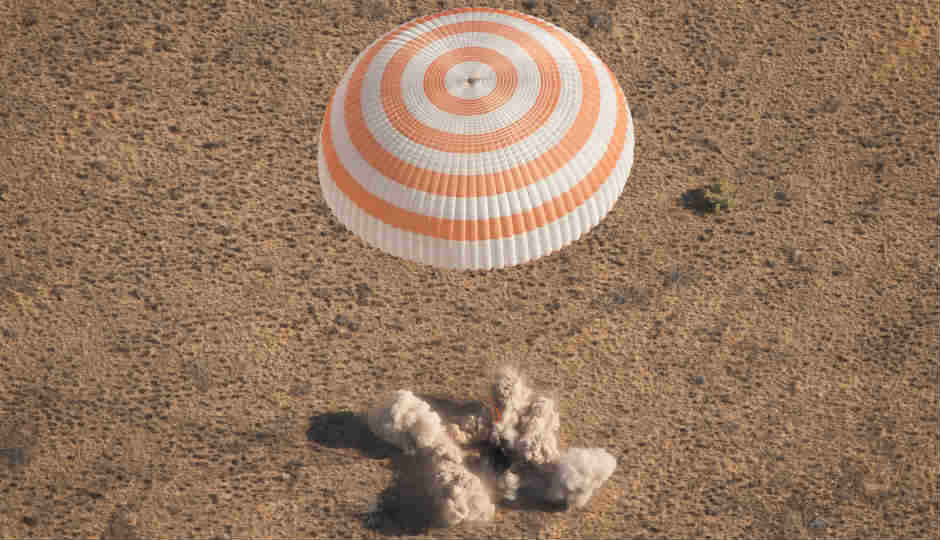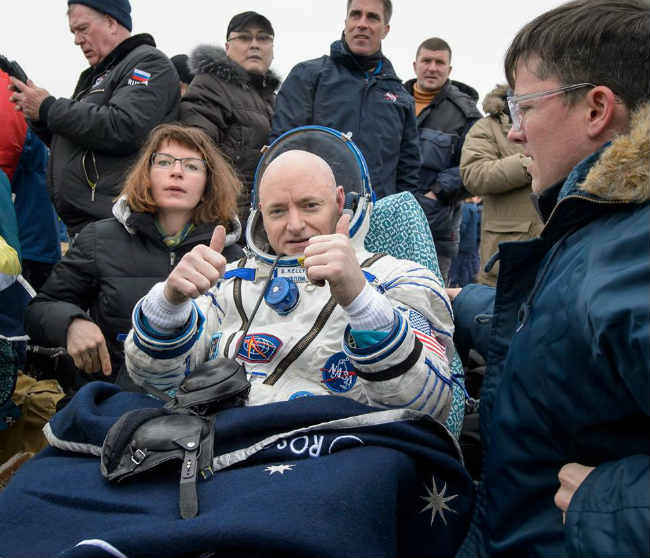What happens in the journey from Space Station to Earth

After 340 days in space, Commander Scott Kelly began his journey down to Earth, touching base at 9:31am IST today. Here's what he, and many other astronauts undergo in their journey from space to Earth.
Life in space is difficult. There’s literally nothing to hold you down, and you need to exert an extra amount of pressure to accomplish tasks that are otherwise next to conditioned reflexes on Earth. Commander Scott Kelly spent 340 days out in the International Space Station (ISS), creating a record that has surpassed previous records by a massive margin. He braved the pioneering task set out by the National Aeronautics and Space Administration (NASA) to study the effect of long-term living in space, and in process of accomplishing it with stunning grace, Commander Kelly saw the blooming of flowers in the middle of nowhere, celebrated Halloween, and even played pranks on co-astronauts.
All of this was certainly strenuous, as a single wrong calculation may set off years of planning. The most difficult bit, however, is the re-entry to planet Earth. The journey from Earth to space is a saga of exiting our natural habitat in a cockpit surrounded by tons of steel, imbibing high pressure levels, and surviving in microgravity. The landing back home, however, is an incredible few minutes of decimal perfect calculations and forces that can go as high up as 9g. Before we discuss this further, here’s a glimpse of the soft landing that astronauts undergo when they return from the ISS. The clip has been put together by the fabulous folks at the European Space Agency, showing the Soyuz’s landing back on Earth, decelerating from a speed of nearly 28,000 kmph, to a standstill on ground.
It is here that you realise that the landing procedure involves an incredible amount of in-cabin pressure. The International Space Station traverses outside the Earth at a speed of about 28,000 kilometres per hour. Once the landing program is decided, the ground is inspected by an on-ground team, who can travel on any harsh terrain. Weather forecasts and ground situations are analysed, the landing trajectory is decided, and preparation begins to bring the astronauts back home. The astronauts then go through a simulated landing procedure inside the Soyuz simulator of the ISS, emergency landing schedules, latest statistics and data from the Space Station, and every other knobs and dials are placed at the perfect points.
The landing module detaches from the space station at about 120 cm/s, and after an interval that sees the ISS and the module safely away from each other, engines are engaged to thrust the landing module into orbit. This thrust is done at exact points in orbit, so that the module does not overshoot the calculated landing trajectory. The de-burning procedure is then engaged, introducing the module into the Earth’s atmosphere. The purpose of the de-orbit burn is to increase speed, that changes the trajectory to the exact optimum. As the module enters the atmosphere, friction with the upper layers leads to extremely high temperature levels outside the module, burning up the outer surface of the landing module. The astronauts are insulated from this heat by protective layers, led from the front by a heat shield that protects the retro thrusters and the outer bearing of the module.
"If calculations are wrong, cabin pressure can go as high as 9g"
The engines on the front face are re-engaged to present a thrust against the momentum, controlling the speed of the module to ease the re-entry. This burning is essential to offload resources and set the correct trajectory, and the precise duration of engine burn is set to 4 minutes and 45 seconds. The next bit is the separation of the entire landing vehicle. At an altitude of 140 kilometres, the vehicle separates into three separate parts – the orbital module, the landing module and the instrument compartment. While the landing module continues on the trajectory, the other two modules disintegrate and burn up in the atmosphere. The next bit is the automated control of the module’s rotation to optimise the trajectory, which is crucial in fixing the right amount of pressure level. Even at the correct trajectory, astronauts inside the landing module experience pressure levels of 4g. If the path is calculated wrong, the pressure exerted by the atmosphere can go up as high as 9g.
In the following few minutes, after the landing module gets its trajectory right, it begins its drastic deceleration. From the orbital speed, it decelerates to 800 kmph, at an altitude of about 10.5km. After this speed is attained, parachutes are deployed to halter its momentum even further. The parachutes are an aspect on which the astronauts do not have any control, and after its deployment, the module also loads of the heat-insulating shields and extra fuel and combustion load, to prevent any chances of explosion upon ground impact.
After 340 days in space, astronaut Scott Kelly is back on Earth from his #YearInSpace mission. Landing was confirmed at 11:26 p.m. EST and the crew is safely on the ground in Kazakhstan: http://www.nasa.gov/station
Posted by NASA – National Aeronautics and Space Administration on Tuesday, 1 March 2016
The final round of impact are the retro engines, which deploy when the module is 70cm from the ground, to ensure soft landing. This, however, is anything but soft. The astronauts’ seats are lifted to prevent the impact from shattering the bodies. This is the heaviest impact point in the module’s trajectory, which also prevents the module from toppling over. The retro engines kick back at the module to break its motion, bringing it to a halt.
The ground impact team monitors the entire trajectory from the ground, and stands by the landing zone. Helicopters and rescue vehicles reach by the module right after the impact, and the astronauts are brought out of the cockpit soon after, to the breath of fresh air – a world that was miles away only a few hours ago. As for Commander Kelly, he smelled fresh air and normal gravitational force for the first time in nearly one year.
Welcome back, Commander.






